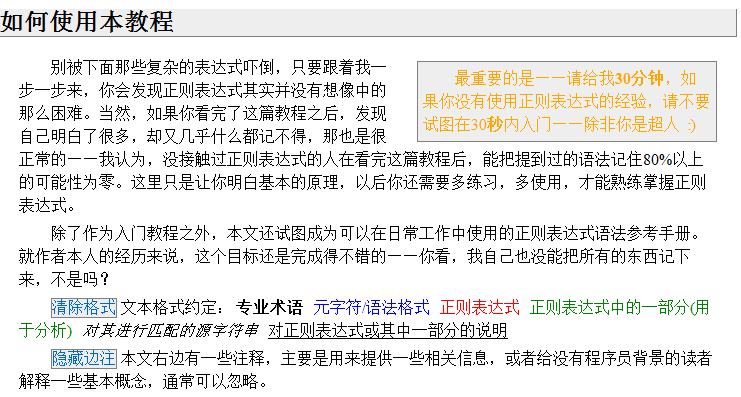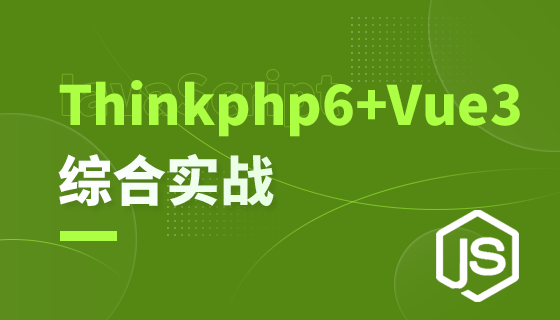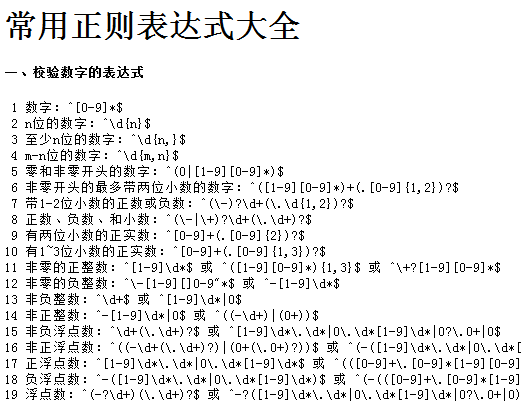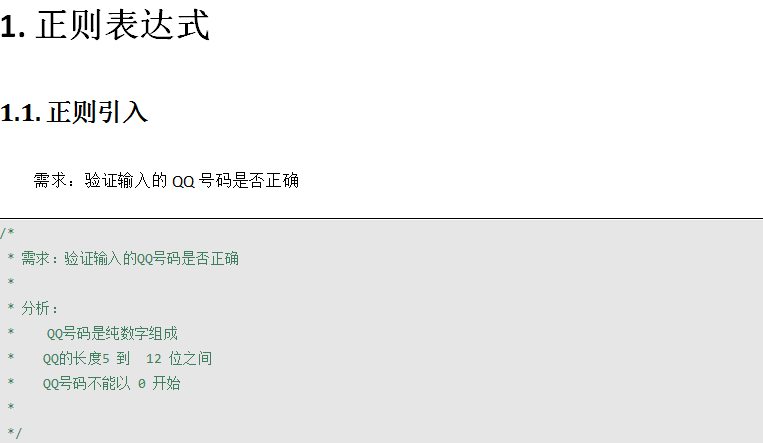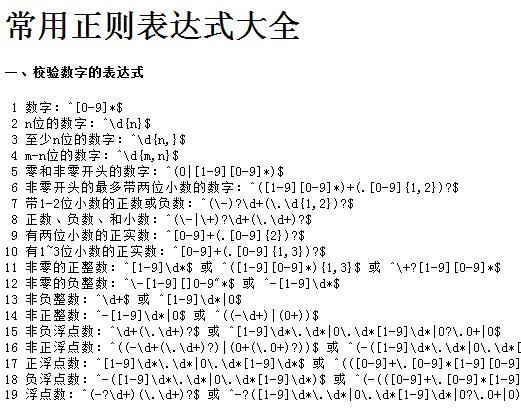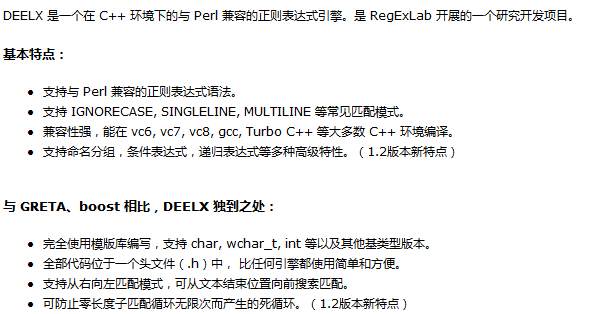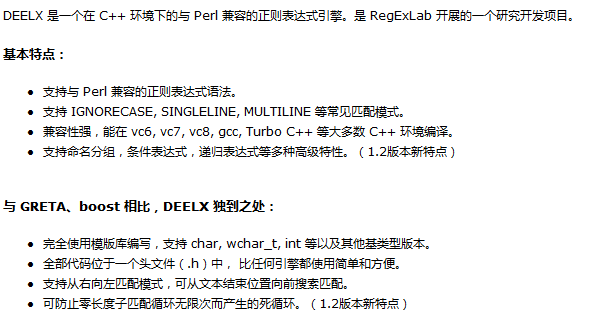更多>
最新下载
24小时阅读排行榜
- 1 微博的浏览记录会同步吗_微博浏览记录同步规则说明
- 2 如何在Windows中配置JavaFX开发环境
- 3 如何通过css工具Sass实现循环生成类
- 4 python错误类型捕获的方法
- 5 PHP一键环境为什么不能发送邮件_邮件发送功能配置
- 6 彻底格式化硬盘并进行纯净Windows安装
- 7 Linux用户权限怎么管理_Linux用户权限管理的详细操作教程
- 8 PHPWebSocket怎么通信_PHP结合GatewayWorker实现WebSocket实时通信
- 9 抖音tiktok官方网址入口官方版 抖音tiktok官网首页快速直达
- 10 小强阅读app怎么删除书架上的书_小强阅读app已存书籍如何从书架删除详细方法
- 11 Linux SSH授权密钥与权限设置
- 12 阴阳师一起捉咪藏第三天攻略-阴阳师一起捉咪藏第三天在哪找
- 13 PHP代码怎么实现验证码生成_PHP验证码图片生成与验证步骤
- 14 css初级项目导航栏下拉效果优化
- 15 OFX代购大额汇款优势在哪里_OFX代购大额汇款优势解读
更多>
最新教程
-
- Node.js 教程
- 5765 2025-08-28
-
- CSS3 教程
- 843461 2025-08-27
-
- Rust 教程
- 9150 2025-08-27
-
- Vue 教程
- 11217 2025-08-22
-
- PostgreSQL 教程
- 8817 2025-08-21
-
- Git 教程
- 4677 2025-08-21
下载首页 / 学习资料 / 网页制作


首先简单介绍下正则表达式:
在编写处理字符串的程序或网页时,经常会有查找符合某些复杂规则的字符串的需要。正则表达式就是用于描述这些规则的工具。换句话说,正则表达式就是记录文本规则的代码。
下面就看看正则表达式里乱七八糟的字符都是什么意思:
1、常用的元字符
代码 说明
. 匹配除换行符以外的任意字符
\w 匹配字母或数字或下划线或汉字
\s 匹配任意的空白符
\d 匹配数字
\b 匹配单词的开始或结束
^ 匹配字符串的开始
$ 匹配字符串的结束
那我们试着理解下:
\bhello\b 其实就是查找单词hello了——先是某个单词开始处(\b),然后是字符串hello,最后是单词结束处(\b)。
010-\d\d\d\d\d\d\d\d 比如北京的固定电话——先是010-,然后是8个数字(\d)。
^\d{18}$ 比如身份证号——先是字符串开始(^),然后是18位数字(\d),最后字符串结束($)。


本站所有资源都是由网友投搞发布,或转载各大下载站,请自行检测软件的完整性!本站所有资源仅供学习与参考,请勿用于商业用途,否则产生的一切后果将由您自己承担!如有侵权请联系我们删除下架,联系方式:admin@php.cn

